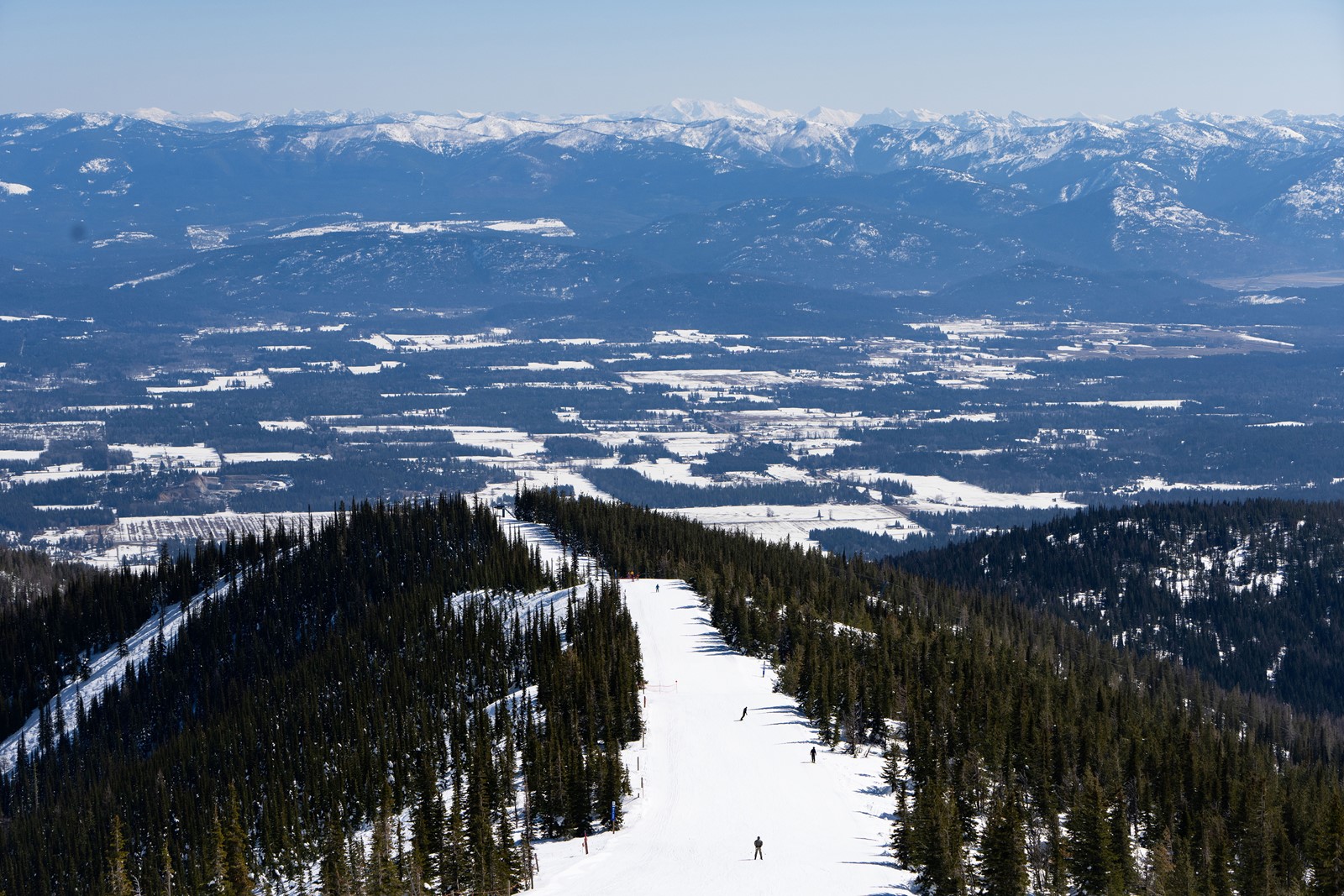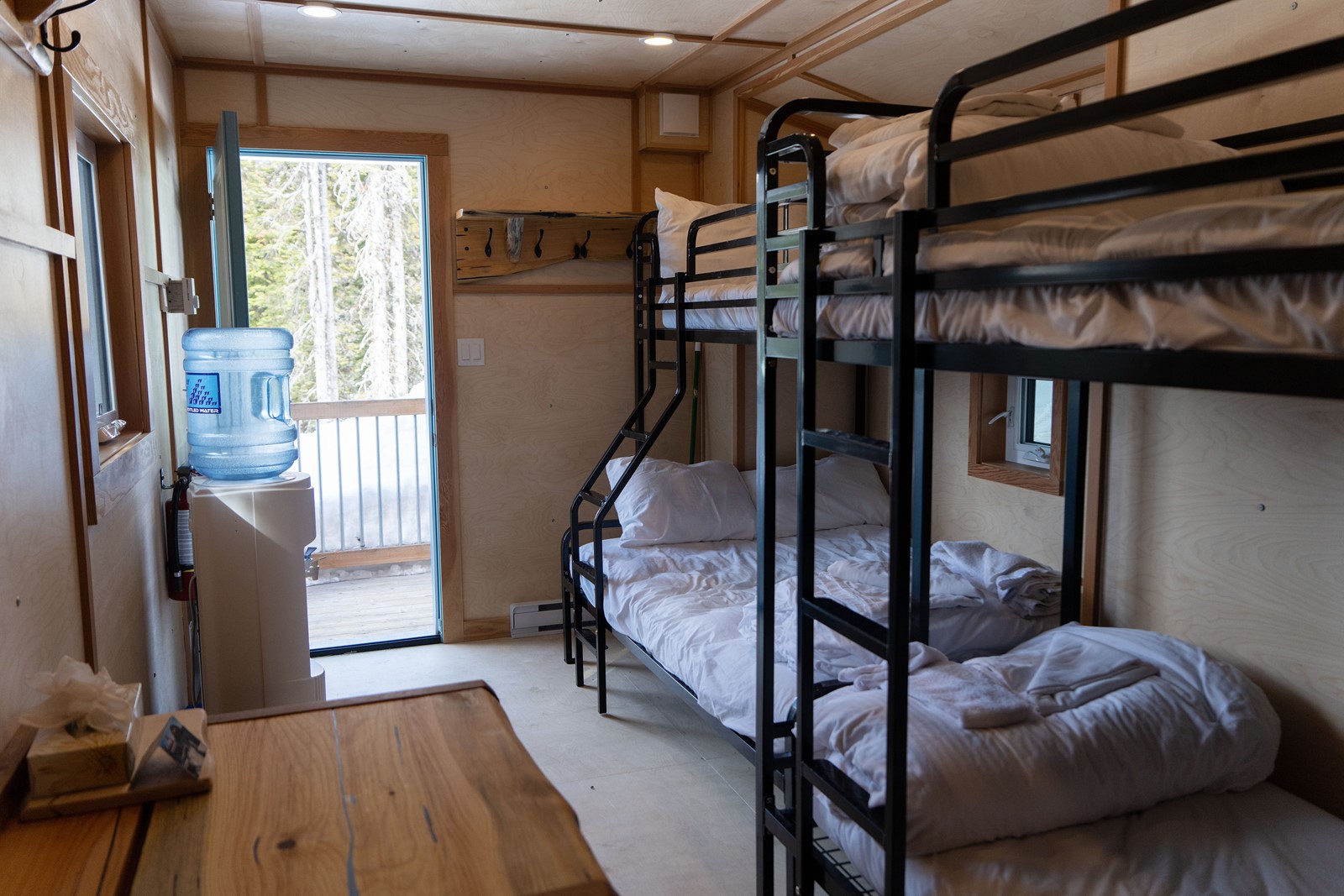

My friend Michelle and I took turns following each other as we skied through stands of snow- and rime-coated subalpine fir. It had been three days since the last snowfall, but on this frigid January day at Schweitzer, in Idaho’s panhandle, we still found soft, untracked powder. It was delightful, but not a surprise.
For one, we were the only skiers in this section of Outback Bowl on a midweek afternoon. Two, with 2,900 acres of terrain, Schweitzer is Idaho’s largest ski area (almost 1,000 acres bigger than Sun Valley), so there’s lots to explore, including lingering powder stashes.
We had come on what we called a “two-nation ski vacation.” First up would be a couple of days at Schweitzer in northern Idaho, followed by two days at Red Mountain, three hours away by car in the Canadian province of British Columbia. Then we would close the loop by driving back to the airport in Spokane, Wash., about 21/2 hours from Red. Each resort is known for its tree skiing and off-the-beaten-path location, and both are part of the Ikon multi-mountain pass network.
At the time, the trip was also a chance to enjoy the comparatively low-key vibe of two independently owned ski resorts; since our visit, Schweitzer was acquired by Alterra Mountain Co., which owns 16 ski areas across North America and is the company behind Ikon.
Under the radar, but not for long
Schweitzer, in the Selkirk Mountains near the town of Sandpoint, Idaho, isn’t known much beyond its traditional markets of northern Idaho and eastern Washington, but the Alterra acquisition may change that. The resort had already planned upgrades before the sale, including a modern boutique hotel at the base that opened in 2022, a high-speed quad lift added the next year and, still to come, a new entry road, additional parking, more beginner terrain and a new day lodge.
In basic terms, Schweitzer consists of two huge bowls. But that’s like saying a scoop of vanilla ice cream equals a sundae. Within those bowls are ridges, gullies, chutes and sub-bowls, plus large swaths of well-spaced trees. The trail map lists 92 named runs, including 17 gladed areas with multiple routes threading through them. Aside from the advantages of its mountain topography, Schweitzer offers so much tree skiing because the entire ski area is on privately owned land, so the forest can be judiciously culled without a lengthy permitting process.
But it’s not all trees. There are also plenty of long, thigh-burning, buffed-out runs, including some of the steepest groomers I’ve skied anywhere.
Much of the resort’s appeal lies in the relatively seamless melding of old and new. Take the compact base area, where services are limited to a handful of restaurants, bars and shops. Until recently, the only accommodations in the base village were a traditional ski lodge-style hotel and one condo building (the resort also offers free RV parking in one of its lots for up to three nights).
A welcome addition was our home for a few nights, the striking Humbird Hotel, designed by Skylab Architecture and perched on a sliver of steep slope at the edge of Schweitzer’s base. Each of the 31 rooms (from $199) has a view of Idaho’s largest lake, Pend Oreille.
Every morning just before 9 a.m., a Schweitzer staffer rings the bell in the base area clock tower to signal that the lifts are open, a tradition since the early 2000s. As skiers and snowboarders get ready to head up the mountain, it’s not unusual to spot some cross-country skiers in the mix on their skinny skis; that’s because the resort also offers close to 20 miles of groomed Nordic trails ($20 daily fee) that start from the base area. Cat-skiing on terrain adjacent to the ski area is also available.
But we came to sample as much of the inbounds terrain as we could. On our second morning, we explored the mountain’s front side, known as Schweitzer Bowl. The off-piste snow was windblown and punchy, so we stuck to wide, high-angle groomers like Jack’s Dream, White Lightning and Pend Oreille. As much as I like ungroomed runs and glades, it was exhilarating to channel my inner Mikaela Shiffrin on these steep, corduroy-ribbed descents.
That day we ate an early lunch at the Sky House, a modern structure atop Schweitzer’s summit with a cafeteria, a sit-down restaurant offering hearty salads and entrees like beef or chicken skewers, and vistas galore. The all-encompassing view on this blue-sky day included Lake Pend Oreille and northern Idaho, with Washington, Montana and even Canada visible in the distance.
Seeing red
The next day, after stopping at the Bluebird Bakery in Sandpoint to grab a cruffin (croissant dough baked in a muffin tin and filled with chocolate cream) for the ride, we were off toward Canada’s Kootenay Rockies, and Red Mountain.
About 55 minutes after crossing the border into British Columbia at Porthill, we arrived in Rossland, a one-time mining town turned ski and outdoor recreation center of about 4,000 residents. Five minutes later and we were at the mountain, checking into the Josie, part of Marriott’s Autograph Collection. Opened in 2018, the 106-room hotel (from 171 Canadian dollars or about $120) has added a sophisticated lodging option and restaurant to the base area, which, like Schweitzer’s, is limited in scope. Better yet, it lies just a snowball’s throw from the bottom of the Silverlode lift.
More than many ski areas, Red conveys a sense of discovery. It can be hard at first to get a read on the resort’s terrain. The 119 named trails — along with unmarked yet skiable stashes the trail map lists as “countless” — drape over four peaks, including all 360 degrees of cone-shaped Granite Mountain. Spotting trail signs can be hit or miss. The best way to get acquainted with the mountain is to join one of the volunteer Snow Hosts for a free guided tour (9 a.m. and 12:30 p.m. daily).
Red wears its heritage proudly on its sleeve. One afternoon I joined 15 other guests in the Josie’s lounge for an informal history talk by Gord LePage, who was on the ski patrol at Red for 33 years. He told us about the early days of skiing in Rossland, when Scandinavian miners held Canada’s first recorded ski race in 1897, and about local characters like “Flyin’ Phil” Johnson, who used to hang-glide from the top of the ski area. LePage also talked about the base lodge, once the compressor building at Rossland’s mine. Though the lodge has been refurbished over the years, the hefty wooden beams that gave Rafters, the top-floor bar, its name, are original. Après ski, locals and visitors gather at the bar’s picnic tables for microbrews on draft and huge platters of nachos or chicken wings (plus live music on Saturdays).
At the end of one ski day, we took advantage of a rare experience among North American resorts: the chance to spend the night in a lift-accessed, mid-mountain cabin. Each of the six wood-and-steel Constella Cabins, opened in 2020, is simple yet cozy, with pairs of bunk beds or a queen bed, plus a bathroom with sink and toilet ($616 for two people, including dinner and a welcome drink). Michelle and I toted backpacks up the lifts with our essentials, but we could have opted to have luggage brought in by snowmobile. For après ski and dinner — prepared by a staffer who also stays overnight — and breakfast the next morning, we walked from our cabin across to the Constella Clubhouse (open to all skiers for lunch, too).
After dinner, we and the other guests roasted s’mores around a firepit under a waxing moon, relishing the uncharacteristic stillness at a ski resort.
In the morning, I lay in the top bunk and looked out the window at the snow-encased fir trees along White Wolf Ridge to the west, glowing apricot in the rising sun. The light on the ridge went through a palette of pastels before settling on pristine white. Rather than rushing to get ready for a day on the mountain, I could linger and watch as the ski area woke up.
On our last day of skiing, Michelle and I again hunted for powder stashes. After working our way down a run called Jumbo Gully, where the bottom few turns were so icy they sucked the joy right out of skiing, we were dubious. But Red’s various aspects practically ensure you’ll find snow conditions to your liking somewhere. We rode the Motherlode chair to the top of Granite, then circled the summit to reach an area called Coolers. There we found it, soft powder on open slopes amid the trees.


 PREVIOUS ARTICLE
PREVIOUS ARTICLE
